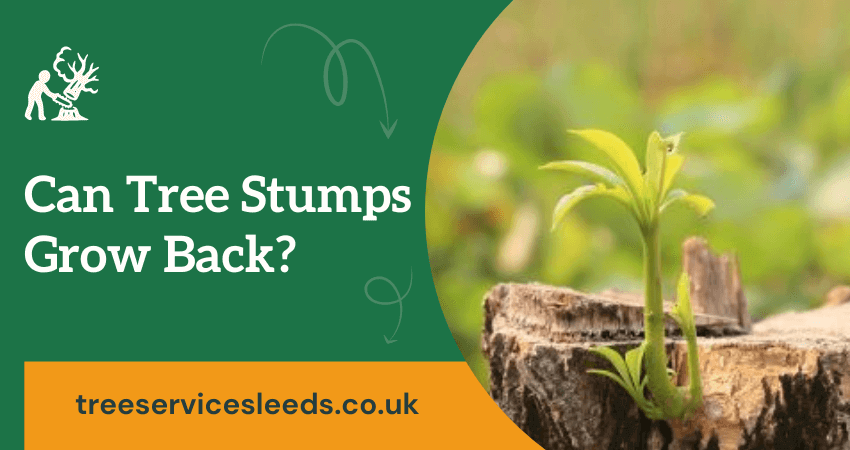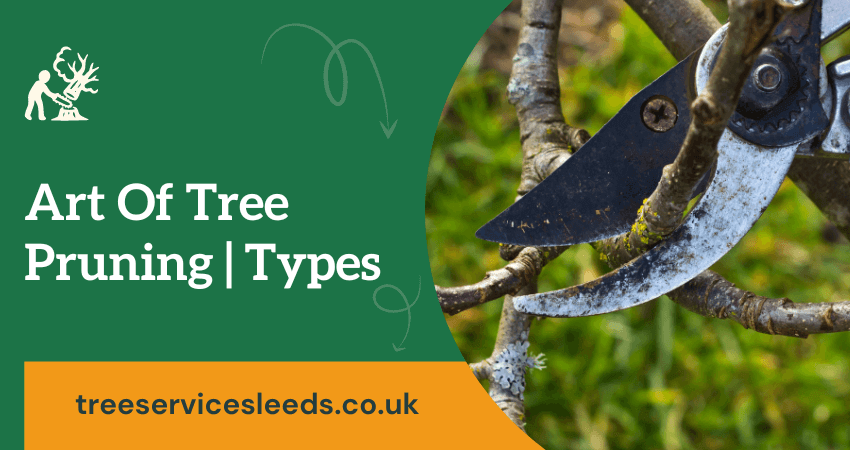Trees are an essential part of our planet’s ecosystem and play a crucial role in our lives. However, there are times when trees need to be cut down due to various reasons, such as disease, safety concerns or to make room for development.
When a tree is cut down, what remains is a tree stump. Many people wonder if tree stumps can grow back. The answer is not a simple yes or no, as it depends on various factors.
In this discussion, we will explore the conditions that determine whether a tree stump can grow back and what are the factors affect tree stump regeneration
Can Tree Stumps Grow Back?
The short answer is yes, in some cases. Many species of trees naturally produce new shoots from their stumps and can regrow into full-sized trees over time. This process is known as “stump sprouting” or “coppicing” and is common among hardwood trees.
However, certain species of trees can’t sprout new shoots even if they are cut down. These include coniferous trees such as pine and spruce.
Even if a stump is healthy and could sprout a new tree, it may be impossible due to human interference. For instance, stumps can be treated with herbicides to prevent regrowth. In other cases, stumps may become infected with pests and diseases that can kill the tree before it even has a chance to regrow.
How tree stumps can potentially grow back?
Tree stumps can potentially grow back if there is still an active root system in place. This happens when the tree has been cut off at ground level and some of the roots remain intact. The root system provides a source of energy to the stump and can allow it to regrow from its remaining resources.
For a tree stump to grow back, it must have access to sunlight and ample nutrients in the soil. If these conditions are favorable, then a tree stump can regrow into a new tree. However, this requires time and patience. Some stumps may take upwards of several years before they begin to sprout new growth.
Factors that affect tree stump regeneration
Tree stumps can regenerate over time but the success of regeneration depends on several factors.
- Species: Not all tree species can regrow from a stump and some may require special treatment to regenerate pine trees often need to be cut into pieces and treated with rooting hormones for them to regenerate successfully.
- Age of the stump: The age of the stump can also affect its ability to regenerate. Older stumps are more difficult to regrow because their wood has started to decay, reducing the number of viable cells for regeneration.
- Soil conditions: Soil moisture, soil nutrient levels and pH are important factors in tree stump regeneration. Adequate soil moisture is necessary for the successful germination of the sprout, while soil nutrients and pH can affect how quickly the stump regenerates.
- Health of the tree before it was cut down: Healthy trees that were cut down will have a better chance of regenerating than those that were unhealthy or diseased when they were cut.
- Environmental conditions: Factors such as temperature and sunlight can also affect how quickly a stump regenerates. Properly managed stumps exposed to adequate amounts of sunlight often regenerate more quickly and successfully than those in shadier areas.
- Time of year: The season during which the tree was cut down can also have an impact on regeneration. Stumps cut in late autumn or winter may take longer to regenerate because of the colder temperatures and shorter days.
- Method of removal : The method of removal can also affect the success of regeneration. Trees cut with a saw or axe may have more callus tissue remaining, which helps to promote stem and root growth. On the other hand, stumps that were pulled from the ground may be more difficult to regenerate due to a lack of callus tissue.
Examples of trees that can regrow from stumps
Several trees are known to have the ability to regrow from stumps. Some examples include:
- Oak trees: Oak trees are known to regenerate from stumps easily and can grow back in a relatively short period.
- Pine trees: Pine trees can also regenerate from stumps, with some species being more adept at regrowing than others.
- Maple trees: Maple trees can regrow from stumps, although it may take longer for them to do so compared to other species.
- Eucalyptus trees: Eucalyptus trees are known for their ability to regenerate from stumps and can regrow rapidly in favorable conditions.
- Poplar trees: Poplar trees can also regrow from stumps, although the success of regeneration depends on the species and environmental conditions.
Pros and cons of growing a tree from a stump
Pros:
- Growing a tree from a stump is an effective and inexpensive way to plant new trees, allowing you to repurpose the existing tree in your landscape.
- It can be used to replace diseased or dead trees without having to purchase a replacement tree.
- Growing a tree from a stump often results in a healthier, hardier and more drought-tolerant tree because it is already accustomed to the environment around it.
Cons:
- Growing a tree from a stump can be difficult and time-consuming, because it requires special care to get the new growth started.
- The results may not always be desirable, as the new tree may not take on the characteristics of the original tree or look aesthetically pleasing.
- Pest infestation can be a problem, as the stump may contain pests that could spread to the newly growing tree.
- It can also require a lot of effort to keep the new growth watered and nurtured so that it properly takes root and grows.
- The survival rate of trees grown from stumps is often lower than those planted from saplings, making it more difficult to achieve success.
- There is also a risk that the stump may not be able to support a new tree and will deteriorate over time.
Overall, growing a tree from a stump can be rewarding but requires extra care and attention to ensure success.
FAQs – Can tree stumps grow back?
What to do with a stump after cutting down a tree?
After cutting down a tree, the stump can be removed by grinding or digging it out. Alternatively, it can be left to decompose naturally but this can take several years. Stumps can also be used as a base for a garden feature or seat.
How long will a tree stump last?
The lifespan of a tree stump depends on various factors, such as the species of the tree, the size of the stump and the environment in which it’s located. Generally, it can take several years for a tree stump to fully decompose and it may take even longer for larger stumps. In some cases, stumps can last for decades or even centuries, depending on the conditions.
How do I make sure the tree stump doesn’t grow back?
To prevent a tree stump from growing back, you can follow these steps:
- Cut the stump as close to the ground as possible.
- Drill several holes in the stump and fill them with a stump removal chemical.
- Cover the stump with a tarp or plastic to prevent rainwater from diluting the chemical.
- Wait for the stump to decay over several weeks or months.
- Remove any remaining decayed material and fill the hole with soil.
Alternatively, you can hire a professional stump removal service in Leeds to grind the stump down to below ground level.
Final Words
While tree stumps may appear to sprout new growth, they cannot truly grow back into fully-formed trees. Stumps can regenerate shoots and suckers but these will not become complete, healthy trees without a root system.
Therefore, while stumps may be able to regenerate to a limited extent, they cannot grow back into the same tree as before. We hope you like this article about Growing a Tree from a Stump.




